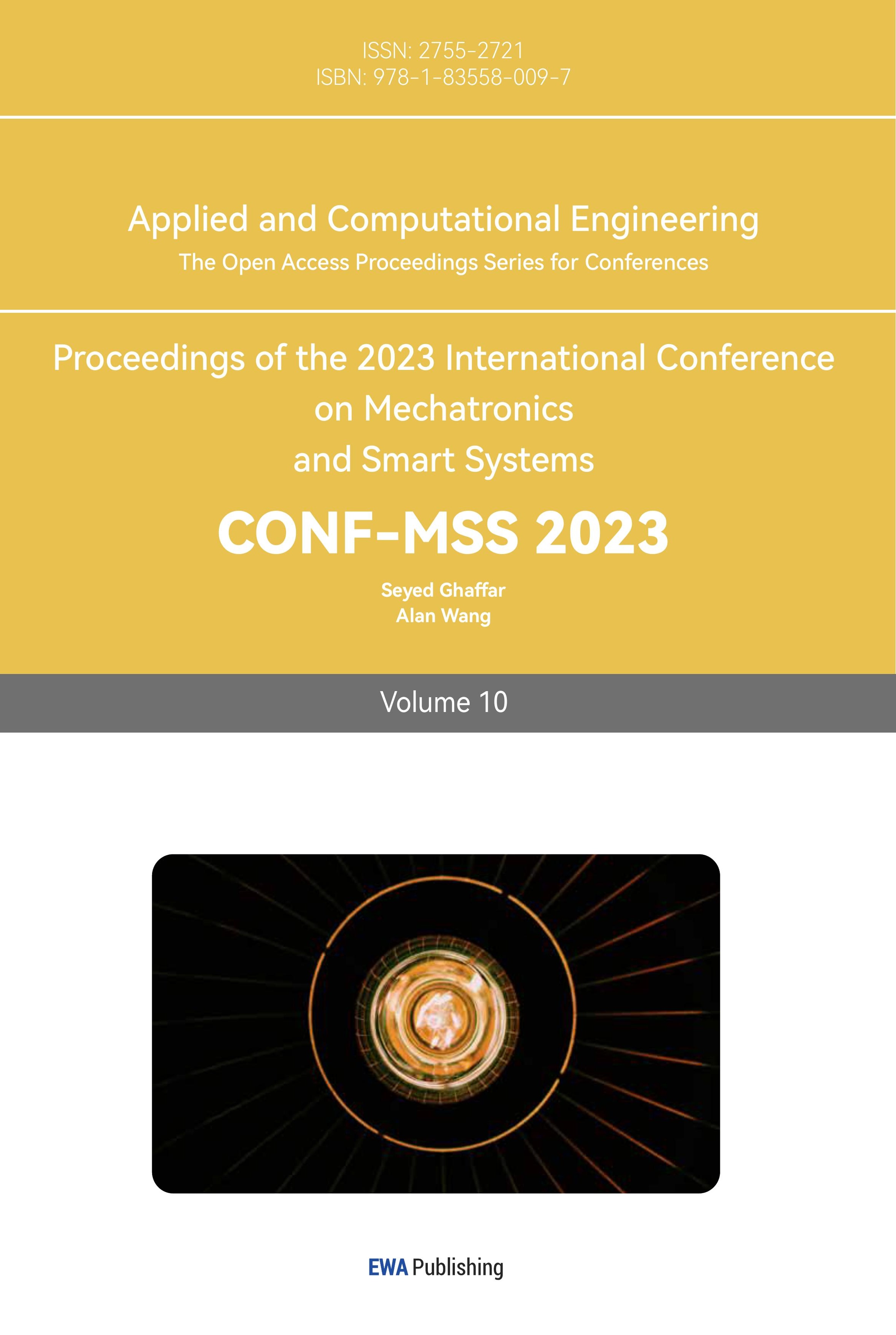References
[1]. YANG Z, WANG B, DONG X, and LIU H 2011 Systems Engineering Procedia 4 189-195
[2]. HUANG L, FU Y, REN H, WEI S,and HUANG Y 2020 Proceedings of the CSEE 40(21) 7065-7078
[3]. MENG K, TENG W, PENG D, XIANG L, and LIU Y, 2023 China Mechanical Engineering 1-11
[4]. PENG L, LIU X 2022 Computer and Information Technology 30(3) 49-52
[5]. ZHEN C, ZHANG Z, GUO D, and LIU Z 2023 J.Zhengzhou Univ.(Nat. Sci. Ed.) 55(2) 88-94
[6]. REN W, ZHANG W, LI M, XU X, and LIU H 2022 Journal of Projectiles Rockets Missiles and Guidance 42(3) 97-104
[7]. YANG W, FAN X, SUN R, SUN Y, and DING R 2022 Journal of Projectiles Rockets Missiles and Guidance 1-8
[8]. Hu Y, Wang W, Fang F, Song Z, Xu Y, and Liu J 2023 Journal of System Simulation 1-8
[9]. Liu Q, Xu S, and Yu M 2022 Science Technology and Engineering 22(6) 2326-2333
[10]. Fang F, Yao G, and Hu Y 2022 Sci Sin Tech 52(10) 1582–1594
Cite this article
Li,Z. (2023). A study on the use of digital twin in wind generator gears. Applied and Computational Engineering,10,256-264.
Data availability
The datasets used and/or analyzed during the current study will be available from the authors upon reasonable request.
Disclaimer/Publisher's Note
The statements, opinions and data contained in all publications are solely those of the individual author(s) and contributor(s) and not of EWA Publishing and/or the editor(s). EWA Publishing and/or the editor(s) disclaim responsibility for any injury to people or property resulting from any ideas, methods, instructions or products referred to in the content.
About volume
Volume title: Proceedings of the 2023 International Conference on Mechatronics and Smart Systems
© 2024 by the author(s). Licensee EWA Publishing, Oxford, UK. This article is an open access article distributed under the terms and
conditions of the Creative Commons Attribution (CC BY) license. Authors who
publish this series agree to the following terms:
1. Authors retain copyright and grant the series right of first publication with the work simultaneously licensed under a Creative Commons
Attribution License that allows others to share the work with an acknowledgment of the work's authorship and initial publication in this
series.
2. Authors are able to enter into separate, additional contractual arrangements for the non-exclusive distribution of the series's published
version of the work (e.g., post it to an institutional repository or publish it in a book), with an acknowledgment of its initial
publication in this series.
3. Authors are permitted and encouraged to post their work online (e.g., in institutional repositories or on their website) prior to and
during the submission process, as it can lead to productive exchanges, as well as earlier and greater citation of published work (See
Open access policy for details).
References
[1]. YANG Z, WANG B, DONG X, and LIU H 2011 Systems Engineering Procedia 4 189-195
[2]. HUANG L, FU Y, REN H, WEI S,and HUANG Y 2020 Proceedings of the CSEE 40(21) 7065-7078
[3]. MENG K, TENG W, PENG D, XIANG L, and LIU Y, 2023 China Mechanical Engineering 1-11
[4]. PENG L, LIU X 2022 Computer and Information Technology 30(3) 49-52
[5]. ZHEN C, ZHANG Z, GUO D, and LIU Z 2023 J.Zhengzhou Univ.(Nat. Sci. Ed.) 55(2) 88-94
[6]. REN W, ZHANG W, LI M, XU X, and LIU H 2022 Journal of Projectiles Rockets Missiles and Guidance 42(3) 97-104
[7]. YANG W, FAN X, SUN R, SUN Y, and DING R 2022 Journal of Projectiles Rockets Missiles and Guidance 1-8
[8]. Hu Y, Wang W, Fang F, Song Z, Xu Y, and Liu J 2023 Journal of System Simulation 1-8
[9]. Liu Q, Xu S, and Yu M 2022 Science Technology and Engineering 22(6) 2326-2333
[10]. Fang F, Yao G, and Hu Y 2022 Sci Sin Tech 52(10) 1582–1594









